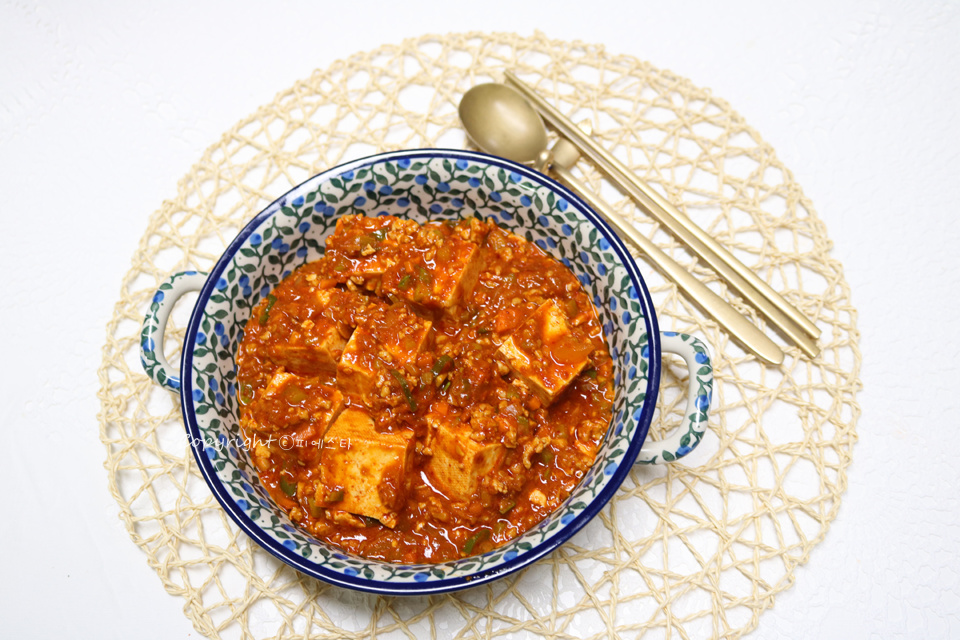Lee Sung-mi’s Braised Tofu: A Quick, Rice-Loving Recipe
Master the ‘Manmulsang’ Lee Sung-mi Tofu Braise: A Recipe for a Perfect Bowl of Rice

Have you ever wondered about the taste? Could it really make you finish a bowl of rice so quickly? I sometimes enjoy watching ‘Manmulsang’! It introduces many useful items for homemakers, and presents dishes that can be made in a snap. Some of the tips they share are truly invaluable. This time, I tried Lee Sung-mi’s tofu braise, a panelist on ‘Manmulsang.’ It looked simple yet felt more like a dish than just a side, and being someone who loves tofu, I decided to follow it exactly. If you’ve been curious about Lee Sung-mi’s tofu braise from ‘Manmulsang,’ give this a try!
Ingredients- 2 blocks (mo) firm tofu
- 1/2 onion
- 1/3 zucchini
- 1/5 carrot
- 1 cup minced pork
- 2 stalks white part of green onion
- 2 peppers (use 1 Cheongyang pepper if you like it spicy)
Cooking Instructions
Step 1
Quite a few vegetables go into this braised tofu, don’t they? The recipe calls for pork, specifically the shoulder cut, but you can use any minced pork you have in your refrigerator.

Step 2
To prevent the tofu from crumbling, which is a common issue with braised tofu, dissolve 2 tablespoons of doenjang (soybean paste) in 4 cups of water. Soak the tofu blocks in this mixture for about 10 to 15 minutes. This step not only firms up the tofu but also imparts a subtle, savory flavor.

Step 3
The tofu is cut quite large, isn’t it? Instead of the thin slices typical for braised tofu, these are cut into substantial squares. This larger size helps the tofu hold its shape during cooking and allows the braising liquid to penetrate deeply. Soaking in the doenjang water firms the tofu and infuses it with a hint of the paste’s savory taste. This is a brilliant tip, similar in principle to lightly salting tofu before pan-frying! It’s a secret to preventing the tofu from falling apart.

Step 4
This recipe avoids artificial sweetness from sugar. Instead, onions are used to provide a natural sweetness. If you prefer a sweeter dish, you can add 1 teaspoon of sugar.

Step 5
Finely mince all the vegetables, similar to how you’d prepare them for fried rice. However, cut the white parts of the green onions into long pieces. These will be used to create fragrant green onion oil.

Step 6
Heat 6 tablespoons of cooking oil in a pan, then add the chopped green onions. Crucially, turn on the heat *after* adding the green onions. If you add the green onions to already hot oil, the onions can burn before their fragrance infuses the oil. Adding them first allows the oil to gently extract their aromatic essence.

Step 7
Once the green onions are lightly golden and a rich aroma starts to fill the air, add the minced vegetables and stir-fry them. The green onion oil will coat the vegetables, adding another layer of flavor.

Step 8
They added all the vegetables at once, so I did too! Red and green chili peppers are included. I skipped the red chili pepper and used a Cheongyang pepper instead for a bit of heat, as I enjoy spicy food. If you don’t like spice, just use regular green peppers.

Step 9
When the vegetables become slightly translucent, add the minced pork. I was a bit puzzled by the order here; typically, after making aromatic oil, you’d stir-fry the meat first to get rid of any gaminess. Here, the vegetables are cooked before the pork.

Step 10
The explanation is that this order helps reduce the overall moisture and allows the seasoning to distribute evenly among the vegetables. Personally, I think stir-frying the pork first would also work well, but following the recipe as is can be an interesting experiment!

Step 11
Let’s stick to the recipe for now! Once the pork is almost cooked through, it’s time to add the prepared seasoning mixture.

Step 12
Tasting the seasoning, it’s not overly sweet. It has a balanced flavor profile with a pleasant saltiness and the mild spiciness of gochujang, creating a savory and slightly fiery profile that complements the other ingredients.

Step 13
Stir-fry the mixture until the seasoning is evenly distributed among the vegetables and pork. Then, add 1 cup of water. Now it’s time to let it simmer and thicken.

Step 14
Once the liquid comes to a rolling boil, carefully remove the tofu that was soaking in the doenjang water and gently place it into the pot. The tofu will soften as it cooks, but the doenjang soak helps it maintain its shape.

Step 15
Now, let the tofu braise over medium-low heat, allowing the seasoning to seep into the tofu evenly. Simmer until the sauce thickens to your desired consistency. Gently turn the tofu pieces occasionally to ensure they are coated all over.

Step 16
Can you see the seasoning deeply penetrating the tofu and vegetables? I used one block of tofu for stew and one for frying, and thanks to the doenjang soak, they held their shape much better than I expected. Once the sauce has reduced to a nice glaze, your delicious Lee Sung-mi braised tofu is ready! Enjoy it with a warm bowl of rice.




